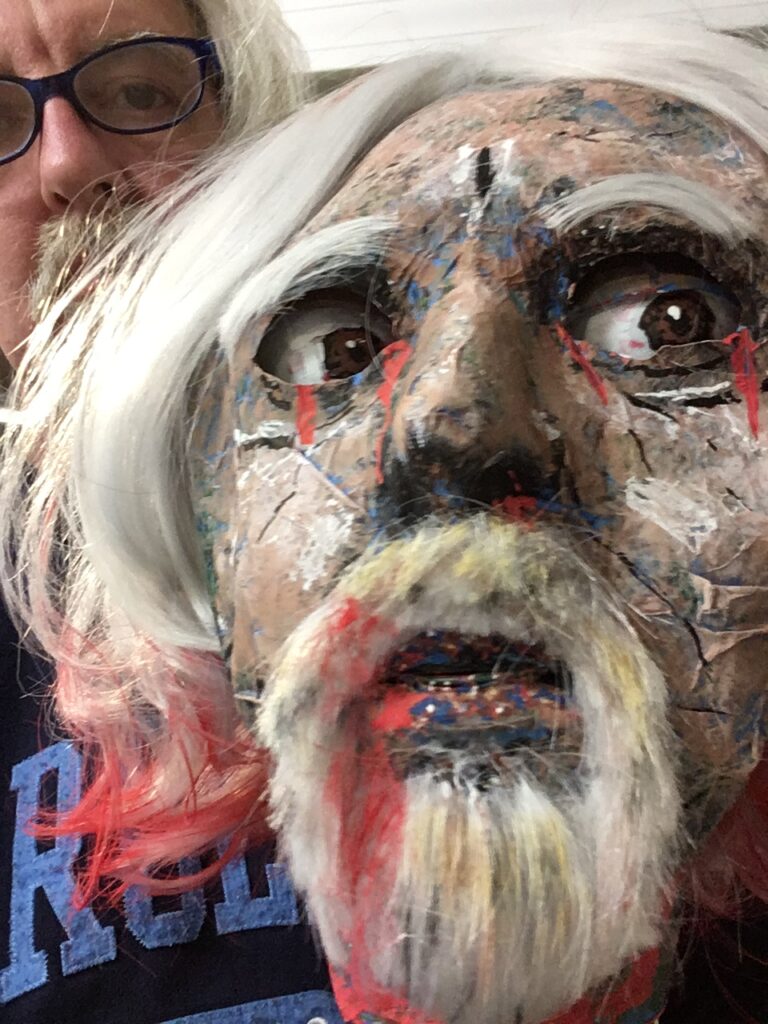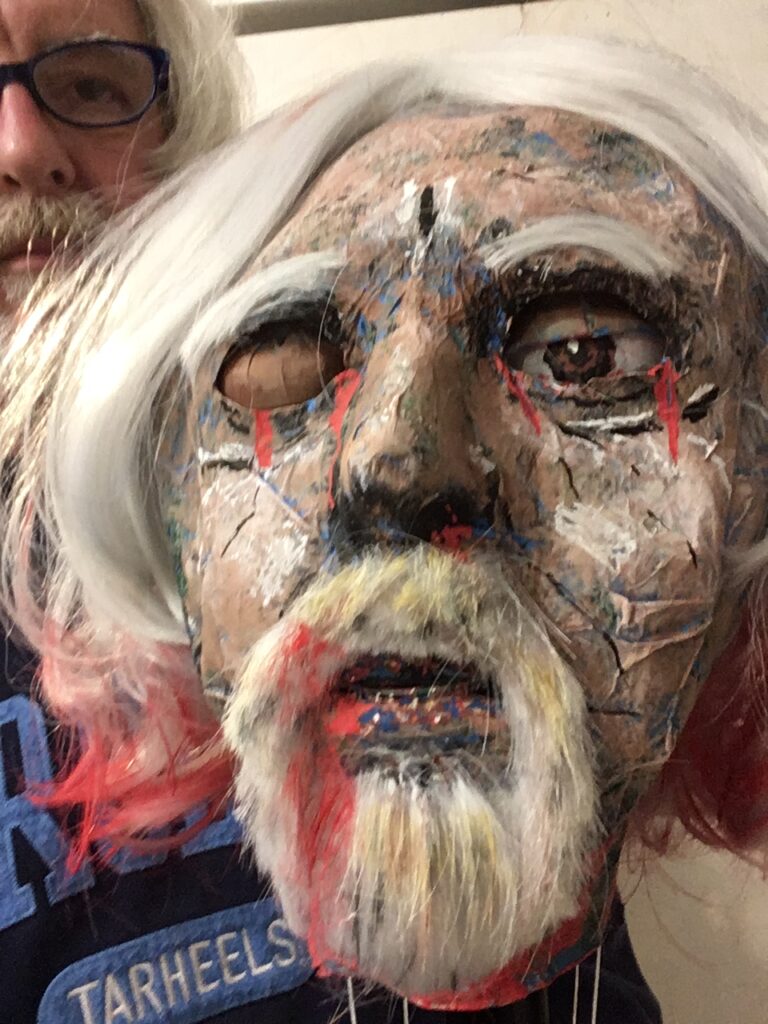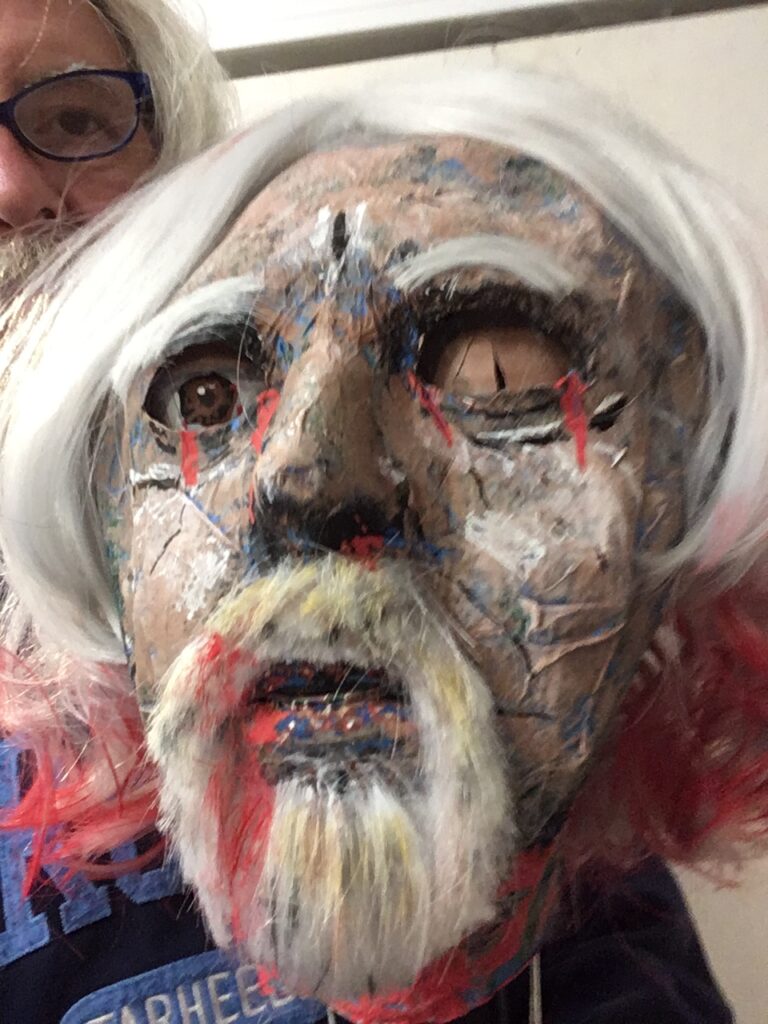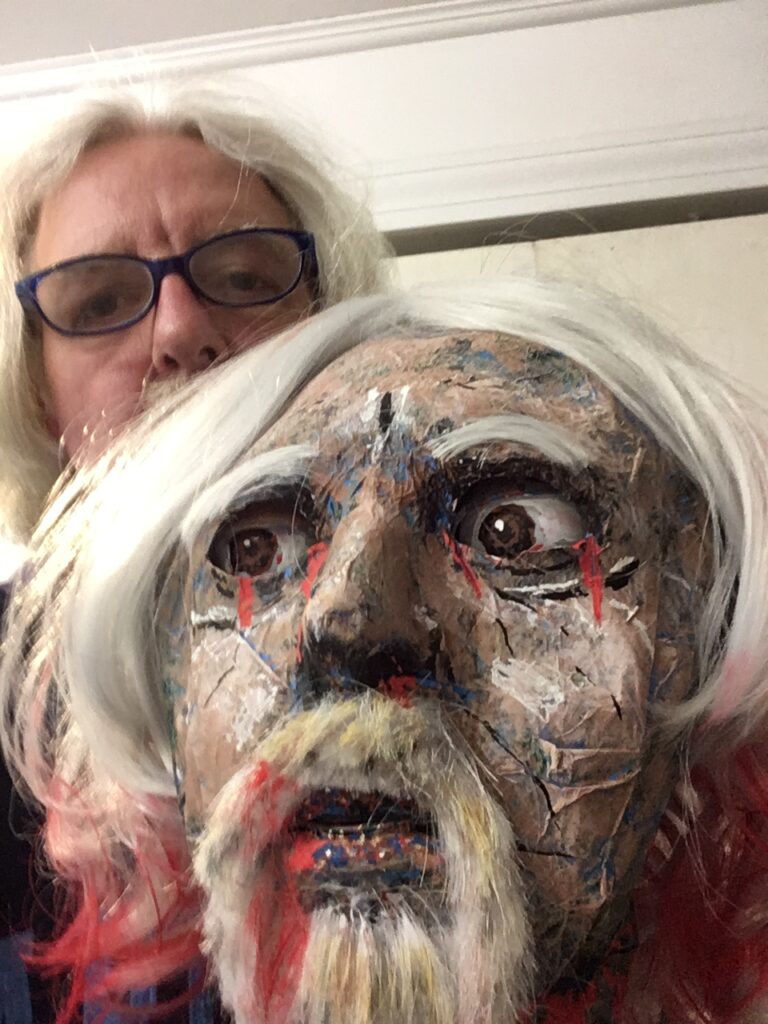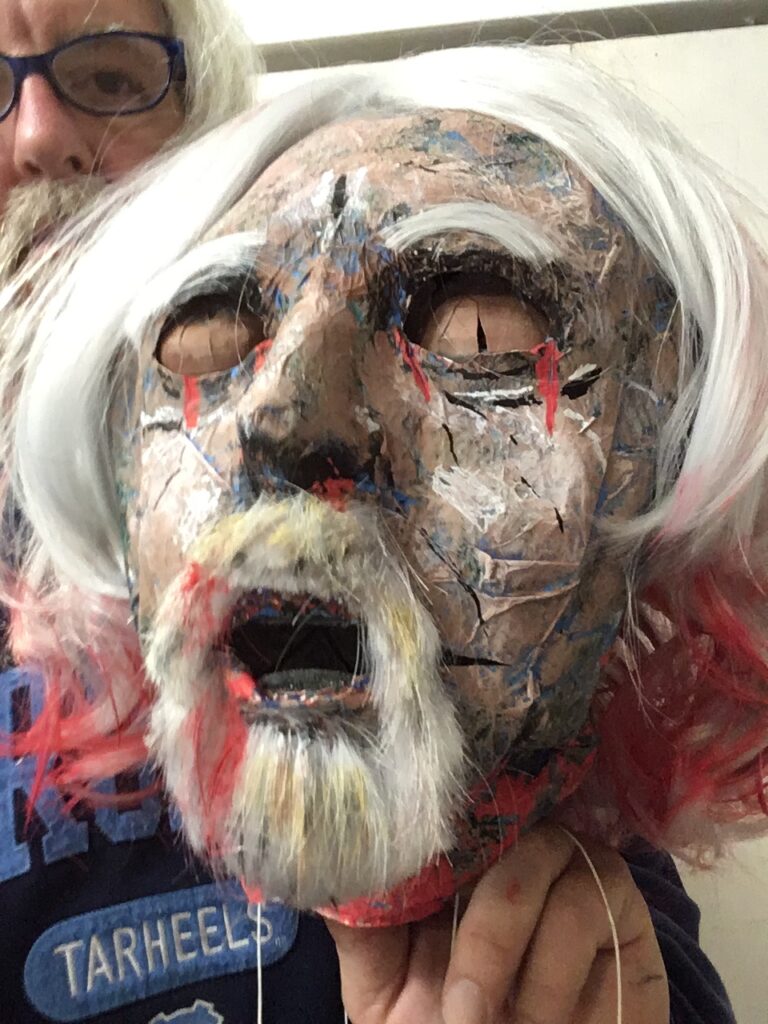A local playwright (Freddy Bradburn) wrote a bit in a folk tale performance that included a decapitated head, placed on a pike at the edge of town as a warning to others, that comes to life, greets its former traveling companions, and joins them in a song. And it needed to look like the actor portraying the living version of the character.
We started with a life cast, and created a flexible machie mask in the shape of the actor’s face.
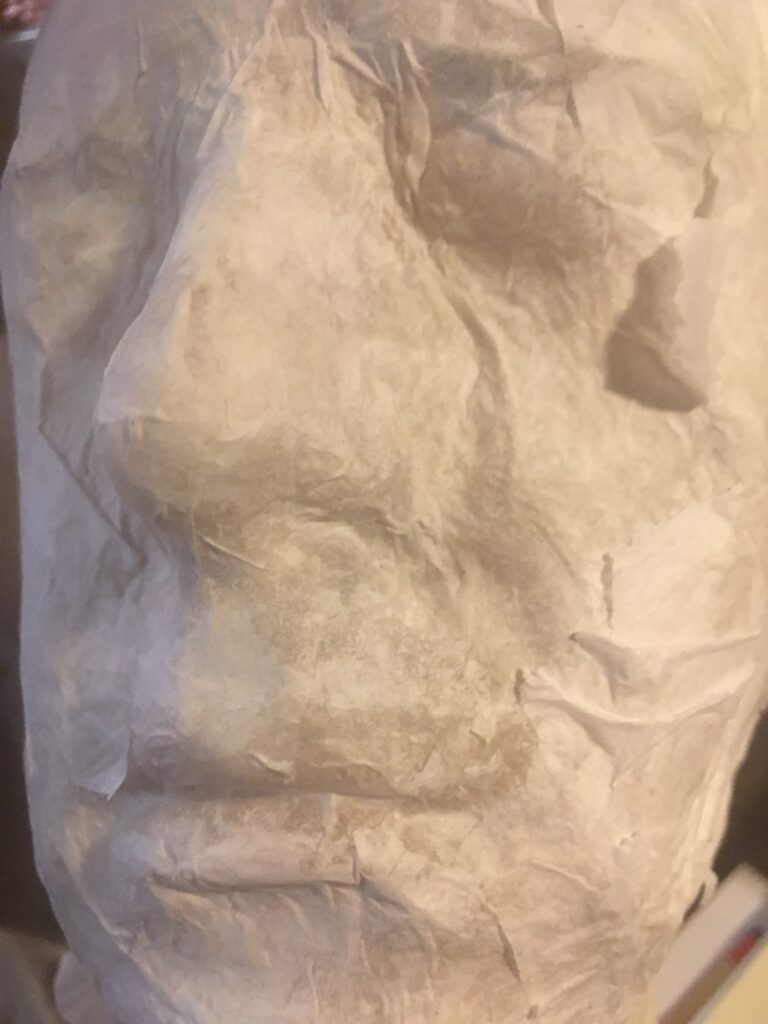
After taking measurements from the life cast, I designed and built mechanisms for the mouth and eyes. The eyes needed to be lidded (I wanted independent movement, so the puppet could wink) and to be able to look to the left and right.
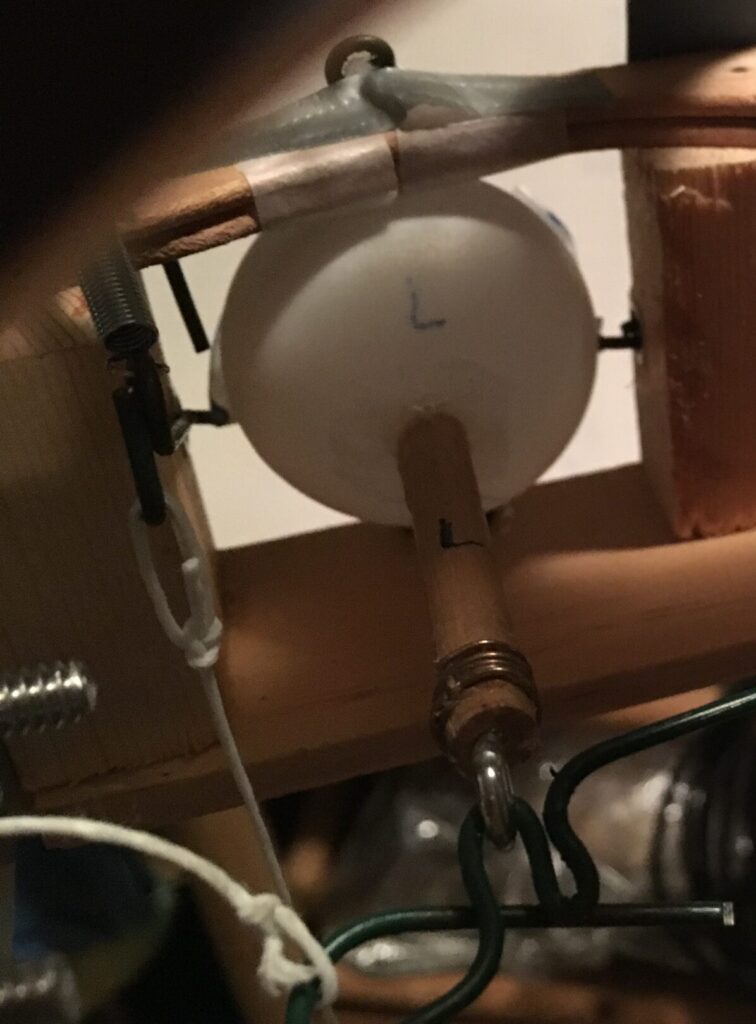
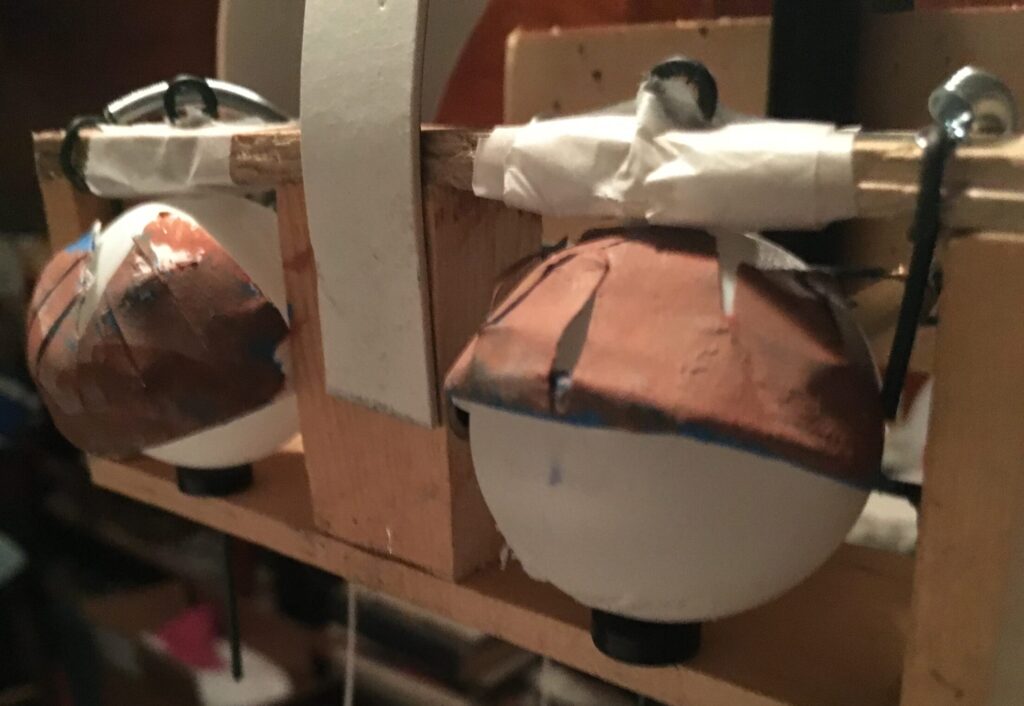
After fully testing the mechanisms and getting the results we wanted, I wrapped the whole rig up in the life mask and a wig. A frame was built to hold a form for the head and tie the moving parts together.
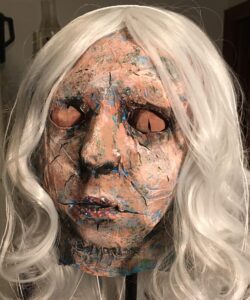
The mask and wig assembled to the eye and mouth mechanism frame. At this point, the entire rig was mounted to a cast iron base microphone stand, which would later get a cover to make it appear wooden. An extra 20 lbs of weight was added to the base to increase stability, as the puppet would be remotely operated by strings. 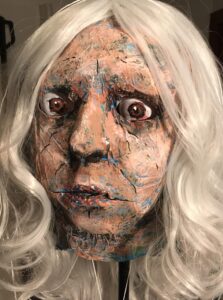
Eyes Open! One of the biggest challenges turned out to be keeping the eyelids generally even, while still giving them independent movement. The answer was ultimately found in the actuator design, and not in the eye mech.
After giving the puppet his haircut to match the Actor’s look, I used the hair trimmings to create the mustache, goatee, and eyebrows. The face also underwent two more paint revisions, mostly in the form of dry brushing to give a better sense of the shape of the face, and to make it appear a bit more freshly dead.
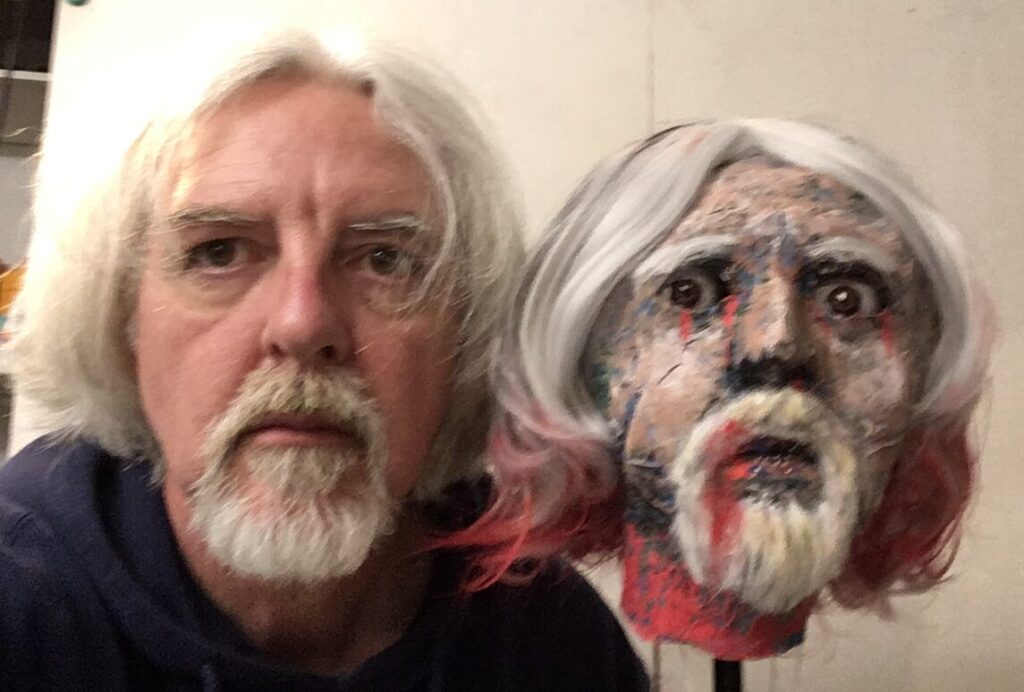
Here’s a few stills of the head going through it’s paces.

In the end, the puppet was very effective and generated a lot of interest. The final operational position is at the base, with the puppeteer lying on the floor behind a small scenic element where he could provide both the voice and action. All actuators are strung with waxed linen thread passed through a yoke at the base, and operated by pulling against the centering springs.
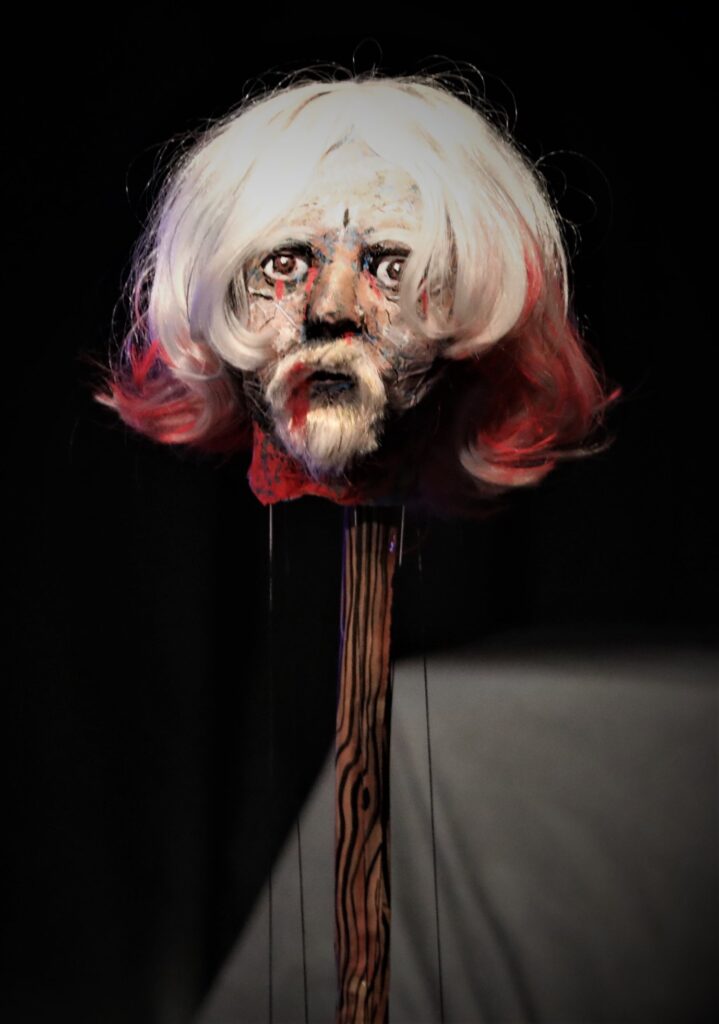
This project had a tight budget. Total materials cost of the finished puppet was less than $300, and the build time was donated.

